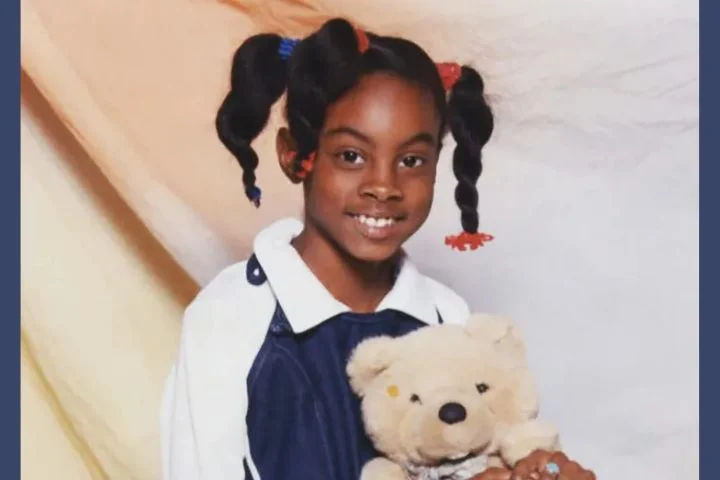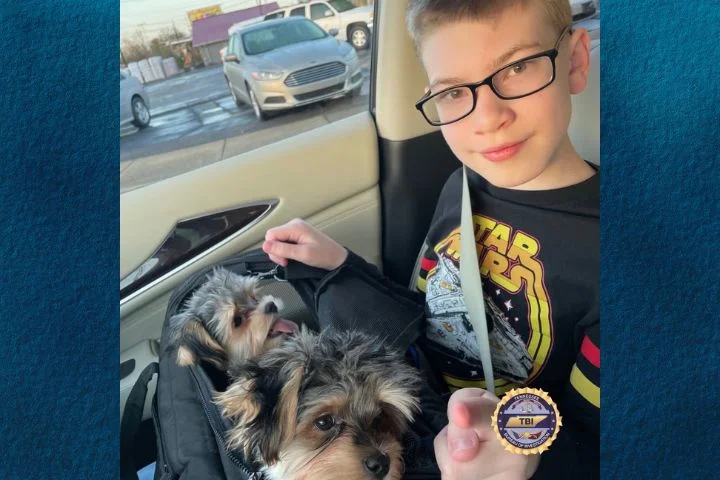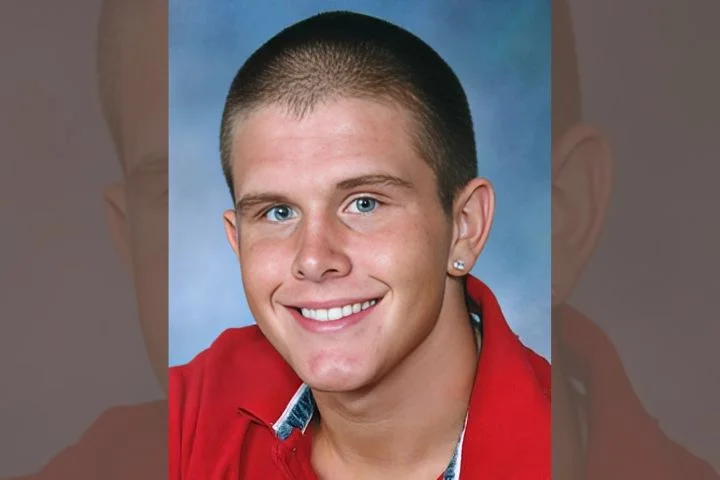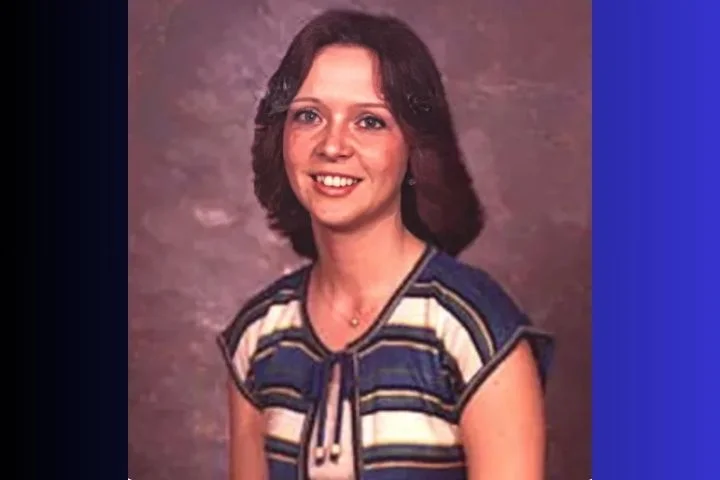Asha Degree was an intelligent and friendly nine-year-old girl who lived outside of Shelby, North Carolina. Her parents, Harold and Iquilla Degree, had gotten married on Valentine’s Day in 1988. The following year, they had their first child, a son they named O’Bryant. Asha was born the year after that, in August 1990. The family lived in a two-bedroom duplex on Oakcrest Drive, which was located in a rural area to the north of Shelby. The children were raised in a very close-knit family. Harold’s mother and sister lived right across the street, and there were numerous other family members who lived in the same general area.
Asha and her brother were extremely close and spent a lot of time with each other. Their parents, though not overly strict, did what they could to make sure that the children were protected from negative outside influences. They didn’t have a computer at home, so the kids had no access to the internet. Neither child had a cell phone or separate phone line, and their parents monitored what they watched on television. The kids were both well-behaved and didn’t seem bothered by any of these restrictions.
Harold and Iquilla placed a lot of emphasis on education, and both children did well in school. They attended Fallston Elementary School, about five miles away from their home. They rode the bus to and from school each day, and O’Bryant could often be seen walking Asha to the door of her fourth-grade classroom before heading to his own fifth-grade classroom. Each afternoon, the children would do their homework as soon as they got home, as they weren’t allowed to go outside and play until they had completed it.
The weekend before Valentine’s Day 2000 was a busy one for the family. Both children had basketball games on Saturday. Asha was the star player on her team, but she had a bad game that day and was fouled out. Her team lost the game, and Asha ended up in tears. Eventually, she realized that no one was holding her responsible for the defeat, and she calmed down enough to sit and watch her brother’s game. Before the players left, they each received a gift bag filled with candy to celebrate Valentine’s Day, and Asha was in a much better mood when she cheerfully accepted her gift.
Saturday night, Asha and a dozen of her cousins had a slumber party at the home of a family member. Asha had been in a great mood at the sleepover, dancing and laughing with the rest of her cousins. They stayed up late, watching television and pretending they were dancers on “Soul Train.” Nothing seemed to be bothering Asha at that point; it looked like she had been able to put her team’s loss out of her mind.
Sunday morning, the entire family went to church like they did every week. Since it was a school night, they planned to just have a quiet night at home. Asha was still tired from the slumber party the night before and ended up going to bed after dinner, sometime around 6:30 pm. She woke up around 8:30 pm when a thunderstorm moved through the area and joined the rest of the family in the den for a little while.
Around an hour or so later, a car accident down the street knocked out power to the neighborhood. Asha made her way back to bed by candlelight while her mother dozed on the couch. The power came back on after midnight, and Iquilla went to bed soon after that. Harold, used to working a second shift schedule, stayed up until about 2:30 am. As he made his way to the bedroom, he stopped and looked in on the children. Both were asleep in their beds.
Sometime after his father went to bed, O’Bryant was roused from sleep when Asha got up to go to the bathroom. She came right back, and he caught a glimpse of her in her white nightgown before he drifted off to sleep. He thought he heard the springs on her bed squeaking, and assumed she was just trying to get comfortable. He didn’t recall hearing anything else, and he slept through the rest of the night.
Monday was a special day for the Degrees. It was both Valentine’s Day and Harold and Iquilla’s 12th wedding anniversary. Of course, it was also a normal Monday, meaning the children needed to get up and get ready for school. Iquilla woke up around 6:00 am and didn’t notice anything unusual until she went into the children’s bedroom a few minutes later to wake them up. O’Bryant was asleep in his bed, but there was no sign of Asha. The house wasn’t large, so it only took Iquilla a matter of seconds to determine that Asha was not inside.
She woke Harold up while simultaneously opening the front door and screaming for her daughter. Harold, half asleep, said to check and make sure Asha hadn’t gone to her grandmother’s house across the street. Iquilla quickly dialled the number. Asha wasn’t there. In a complete state of panic, she threw the phone at Harold and told him to call 911. Reflexively, she looked in each of the family’s cars, knowing that Asha wouldn’t be there but hoping anyway. She then went racing up and down the street, screaming for her daughter.
The 911 call came in at 6:38 am. The first police officer was on the scene at 6:40 am. The sheriff arrived just two minutes later with several deputies. When Sheriff Dan Crawford arrived, he immediately called for a K-9 unit to come out. He also asked for pictures of Asha. The media showed up not long after that, with newspaper reporters and television crews all jockeying for a front-row seat of what was going on.
By the next day, Asha’s picture would be seen all over the state.
It didn’t take long for a large-scale search to start. Swarms of deputies and volunteers blanketed the area near the Oakcrest Lane home. Search dogs hadn’t been able to detect a scent trail; without knowing which direction Asha had gone, the search spread out in all directions. By noon, the sheriff had called for the assistance of a North Carolina Highway Patrol helicopter with infrared heat detection equipment.
By 2:00 pm, agents from the North Carolina State Bureau of Investigation had arrived at the home, and they immediately taped it off as a crime scene. Only immediate family members were allowed inside, although this restriction would lessen as time went by. While there was no evidence of forced entry and nothing to indicate any kind of struggle had taken place inside the home, they couldn’t rule anything out at this point. With so little information to go on in the initial stages, every possibility had to be considered and everyone was a suspect.
Searchers went through the entire neighborhood several times. In addition to law enforcement, volunteers from area fire departments, the Red Cross, and concerned community members all gathered at a command center set up at Mull’s Memorial Baptist Church. Everyone was eager to do whatever they could to find the little girl. By the end of the day, they had covered a three-mile wide area but found nothing.
The disappearance was the lead story on the news that day, and it was after the first coverage of the case aired that detectives got their first solid lead.
Jeff Ruppe, a short-haul truck driver for the Sun Drop Bottling Company, had been driving along his regular delivery route that morning when he saw a young girl walking south on N.C. 18. It was 4:00 am, it was cold, and it was pouring rain, certainly not ideal conditions for a child to be wandering around. Concerned, he immediately stopped his truck.
It wasn’t easy to turn the ten-wheeler around on the two-lane road, but once he did he started driving, slowly, in the direction the child had been walking. It was raining extremely hard, and he didn’t see her on his first pass. He had to turn the truck around again before he finally spotted the little girl and yelled out to her. He was shocked by what happened next: instead of stopping or heading his way, the child left the road at a quick pace and disappeared into the small wooded area that ran along the road.
Clearly, the child was not looking for help. Confused, Jeff continued on his way. Later, when he saw the reports of Asha’s disappearance, he called the police to report the possible sighting.
Jeff wasn’t the only person to report seeing a person walking along the highway that morning. Roy Blanton, Sr., along with his son, Roy Blanton, Jr. had been on a trucking run from Shelby to Fallston around 4:00 am. They were driving north on N.C. 18 when they saw a small figure wearing light-colored clothing walking south along the road. Roy Sr., a former deputy with the Cleveland County Sheriff’s Office, was afraid that the person would get hit. He used his CB radio to alert other truckers in the area to keep an eye out for her, but she moved away from the road.
Both sightings had been on N.C. 18 near where it intersected N.C. 180. The fact that the two men called in to the police independently, each unaware of what the other had reported, made their statements extremely credible. But if it had been Asha they saw, it was starting to sound like she had run away from home on her own. This was a direction no one had expected the case to go in.
Everything detectives learned about Asha pointed to her being a smart, well-adjusted, happy child. None of the usual factors seen in most runaway cases were present. She had a loving, stable home environment, got along great with her parents and her brother, had plenty of friends at school and church, and was an excellent student. She had never given any indication of being unhappy, and she had never gone on any solo adventures outside. The case baffled missing child experts, who noted that children under 12 years old almost never run away from home. Investigators weren’t sure what to think.
On Tuesday morning, police set up a checkpoint on N.C. 18 near where Asha had last been seen. They were targeting commuters who drove along the same route every day, hoping someone would remember seeing something out of the ordinary the previous day. They handed out fliers with Asha’s picture and urged drivers to call if they had any information at all.
The reported sightings of Asha along N.C. 18 energized the search team because it provided them with an area to concentrate on. The location where Asha had been seen walking was near a field owned by Charles Turner. Charles and his wife, Debbie, were the owners of Turner Upholstery Company, located on N.C. 18 a little more than a mile from Asha’s home.
On Thursday, police conducted a search of the Turner property and found some candy wrappers near an entrance to a shed. When they asked the Turners about them, they were shocked to learn Debbie had found a hair ribbon, a marker, and a pencil in that shed the morning Asha was reported missing. For some reason, she hadn’t thought to tell the police about the find earlier. Luckily, she had kept the items, and deputies quickly took them into evidence.
When Harold and Iquilla were shown the items that had been found, they were stunned. The ribbon was Asha’s, they were sure of it. As was the pencil. The items, including the candy wrapper, were sent to the FBI crime lab to be analyzed. Classmates said that the wrapper looked like it had come from one of the candy bags that had been handed out over the weekend at the basketball game, leading investigators to believe that it had indeed come from Asha.
Once the items were confirmed to be Asha’s, detectives tried to determine how and why Asha would have ended up in the Turner’s rickety old shed. Some speculated that she had taken shelter in the shed from the pouring rain. It made sense, but she would have needed to find the shed first. It was set back from the road, and there were no lights in the area. Getting to the shed required going down a long gravel driveway, and it would have been almost impossible to spot in the dark unless someone already knew it was there. There was nothing to indicate Asha had ever been there prior to going missing, so she was unlikely to have known about it.
The search resumed on Friday morning, with the searchers still riding high on the previous day’s findings. They felt optimistic that they were on the right path, but they were unable to find any other clues indicating that Asha had been in the area. They didn’t find anything the next day either. The trail had gone cold. Asha had been missing for a week, 9000 man-hours had been used, more than 300 tips had been followed up on, and a three-mile radius around her home had been scoured, but nothing led them any closer to determining what had happened to Asha.
For the next year and a half, detectives continued to work any new leads they received in Asha’s disappearance but made little progress. This changed on August 3, 2001. Terry Fleming, the owner of Precision Grading, had been working on a construction project in neighboring Burke County when he made an unexpected discovery: Asha’s book bag.
It was found off N.C. 18 about six miles south of Morganton, which was almost 30 miles north of where Asha had last been seen. The backpack had been double-bagged in black trash bags and buried in a spot about 50 yards off the highway. Police confirmed that it was the black and beige bag Asha had left the house with, and her name, address, and telephone number had been on the bag. Sheriff Crawford said that there was clothing in the bag, but didn’t elaborate.Billboard provided by NCMEC
The bookbag was a significant piece of evidence, and police were optimistic that it might help them finally solve the case. It was the first piece of tangible evidence in the case since Asha’s hair bow and pencil had been discovered right after she went missing, and it reinvigorated the investigation.
Police spent seven hours searching through the area where the bag had been found. A cadaver dog was brought in as well. The search took place on a 20-foot embankment that had never previously been searched by investigators and included a nearby creek as well. The conditions faced by the searchers were far more treacherous than anything they had encountered in Cleveland County. The area was covered in a jungle-like brush, and there were numerous muddy slopes that needed to be carefully navigated.
The 100 searchers, who were trained to stay just a few feet away from each other, quickly learned that they would have to modify their technique here. The thick brush made it impossible to stay close, and several times they had to walk through Laurel Creek, unable to make any progress on land.
As the searchers kept their eye out for any of the light-colored clothing Asha had been wearing the night she disappeared, they were also looking for any signs that could indicate a possible gravesite. Mounds of dirt, sunken areas, and unusual vegetation were carefully investigated. They also had to keep an eye out for other hazards: the area was swarming with bugs and black snakes. Spider webs and wasp nests dotted the area, while thorn bushes pricked at their skin and clothing. Poison ivy was prevalent as well, and sometimes impossible to avoid.
When they came across any potential evidence, they would make a note of its GPS coordinates and photograph it before it was carefully collected to be sent for analysis. Unfortunately, they found no further evidence and the case stalled yet again.
Years passed by and police were no closer to finding Asha. Harold and Iquilla refused to give up the search and prayed that Asha would make it home. In 2015, the FBI announced that they would be offering a $25,000 reward for information leading to the arrest and conviction of those responsible for Asha’s disappearance. A community organization offered an additional $20,000 reward, bringing the total to $45,000. It was hoped that a large amount of money would be enough to entice someone with information to break their silence.
While the push for information did lead to some tips coming in, most had already been checked out earlier in the investigation.
Although on the surface it appeared that the investigation went cold, there was much going on behind the scenes. In 2014, Cleveland County Sheriff’s Office Det. Tim Adams had come out of retirement to lead a reinvestigation of the case. Working with Cleveland County deputies, FBI agents, and SBI agents, they began going through old case files, re-interviewing people, and soliciting new leads. Meeting several times a month, the combined task force hoped to gain new insight into what had happened to Asha. They were all convinced that there were people residing in the area who had information about the case.
In 2016, the FBI announced that their new investigation had resulted in a tip that Asha had been seen getting into a green car on the night she disappeared, not far from the place where she was last seen. The car was an early 1970s Lincoln Continental Mark IV or possibly an early 1970s Ford Thunderbird. The car was believed to have rust around its wheel wells. They did not give any specifics on where the information had come from but asked the public to contact them if they knew anything about a possible car that fit the description.
The car wasn’t the only lead they were following up on. Thanks to the persistence of officials who were working the case, more than 350 tips came in between 2015 and 2020. The investigators were checking into each lead and said they were working under the assumption that Asha was still alive.
In 2018, investigators announced that they were seeking information on two items that were related to Asha’s case, though they didn’t say where the items came from. The first was the Dr. Seuss book, McElligott’s Pool; it had a stamp inside indicating it had once belonged to the Fallston Elementary Media Center. The second was a white and red New Kids On The Block nightshirt from their 1989–1990 Hanging Tough tour. Investigators asked for anyone who had any information about either item to call them. They believe these two items could provide the crucial information needed to finally solve the case.
February 14, 2020, was the 20th anniversary of the case, and the FBI used the milestone to make a renewed request for information on the Dr. Seuss book and the New Kids nightshirt. They also released a new detail: the two items had been found inside of Asha’s backpack when it was recovered. Neither item had belonged to Asha, and as of right now the answer to how they ended up in her backpack remains a mystery.
Investigators said that Asha had not been the person who checked the book out of the library, but library records didn’t go back to 2000 so they had no way of telling who had checked it out. As for the nightshirt, Asha likely never knew who the New Kids were. The tour that the nightshirt was from had happened before Asha had even been born. It’s unclear why investigators waited so long to reveal these items to the public, but they remain optimistic that they will help solve the case.
It has been two decades since Asha left her home in the middle of the night, and the case is just as perplexing now as it was then. Over the years, many theories have been put forward to explain what happened to the little girl, but as of right now there is no evidence to support any particular theory.
It is generally accepted — by friends, family, and law enforcement — that Asha walked out of the apartment that night of her own free will. The question is why. Some speculate that she was more upset over the lost basketball game than her parents knew, and this was the catalyst in her decision to run. She was the kind of child who couldn’t handle it if someone was angry with her. If some of her classmates had blamed her for the loss, she may have been afraid to face them on Monday morning.
It’s a farfetched theory, but it is possible. If she did want to run away, why would she wait and do it in the middle of the night? She was afraid of the dark and had never really gone anywhere alone.
Some people believe that she didn’t really leave on her own, but had been groomed to do so by someone she knew and trusted. It’s clear from interviews with her family members that she was extremely shy, especially around people she didn’t know. She also never did anything without getting permission from her mother first — she wouldn’t even let her own aunt in the front door until her mother said it was okay. This makes it seem unlikely that she would have gone anywhere with anyone, trusted or not, unless she told her parents first. It also is hard to believe she would do anything without telling her brother, as the two of them tended to do everything together.
Asha didn’t have access to the internet, so she couldn’t have met someone in a chat room. It’s possible that she had attracted the attention of an older sibling of one of her friends, but again, this seems unlikely. Someone — her friend, her brother, friend’s family — would probably have noticed if an older teenage child had taken a sudden interest in a nine-year-old girl.
For the detectives working the case, finding Asha Degree is their number one priority. If they can find her, they may finally unlock the answers to why she left her home in the middle of the night. There is currently a $45,000 reward being offered for information leading to the resolution of her case. If you have any information on Asha, please call the FBI at 704–672–6100 or the Cleveland County Sheriff’s Office at 704–484–4822.






